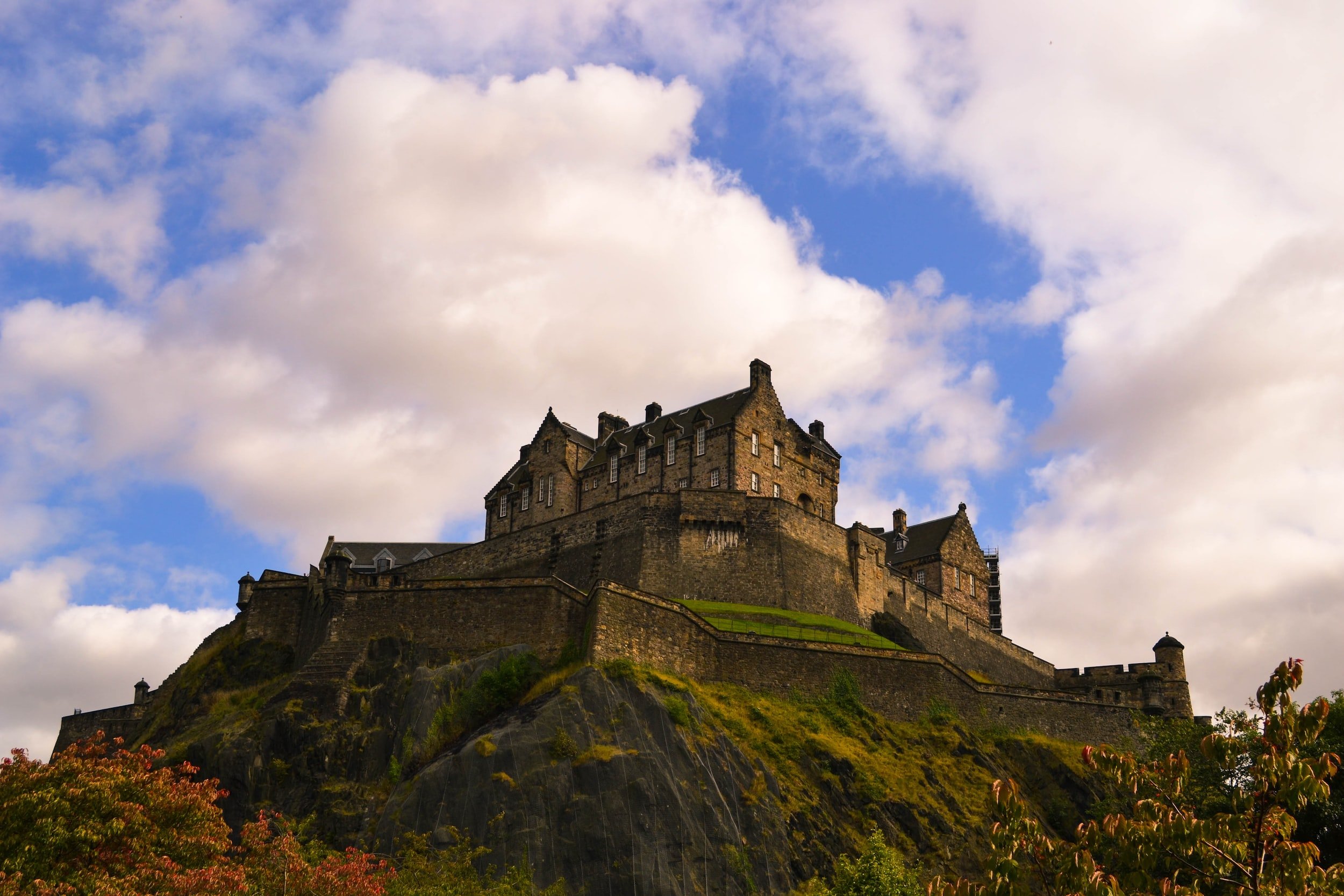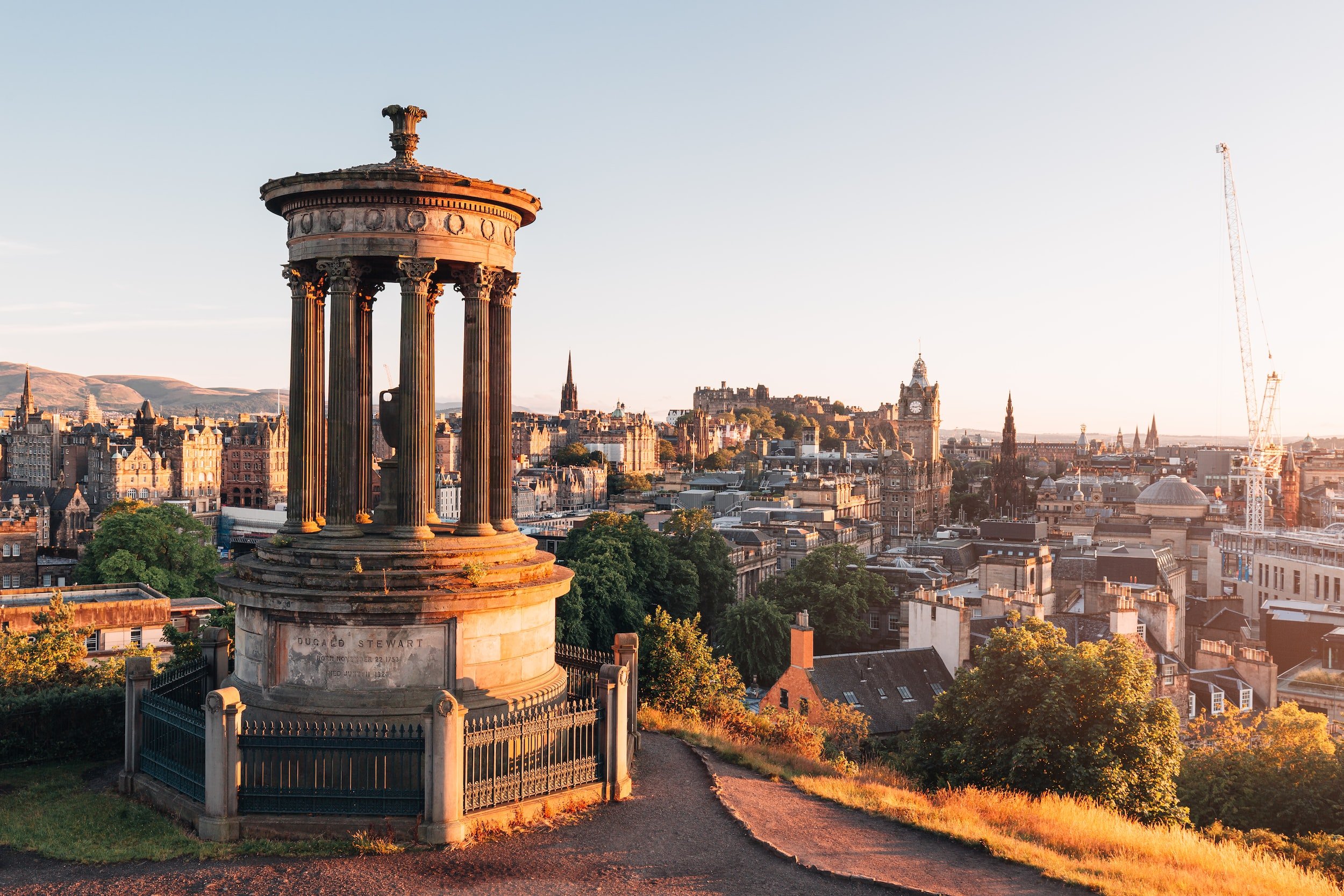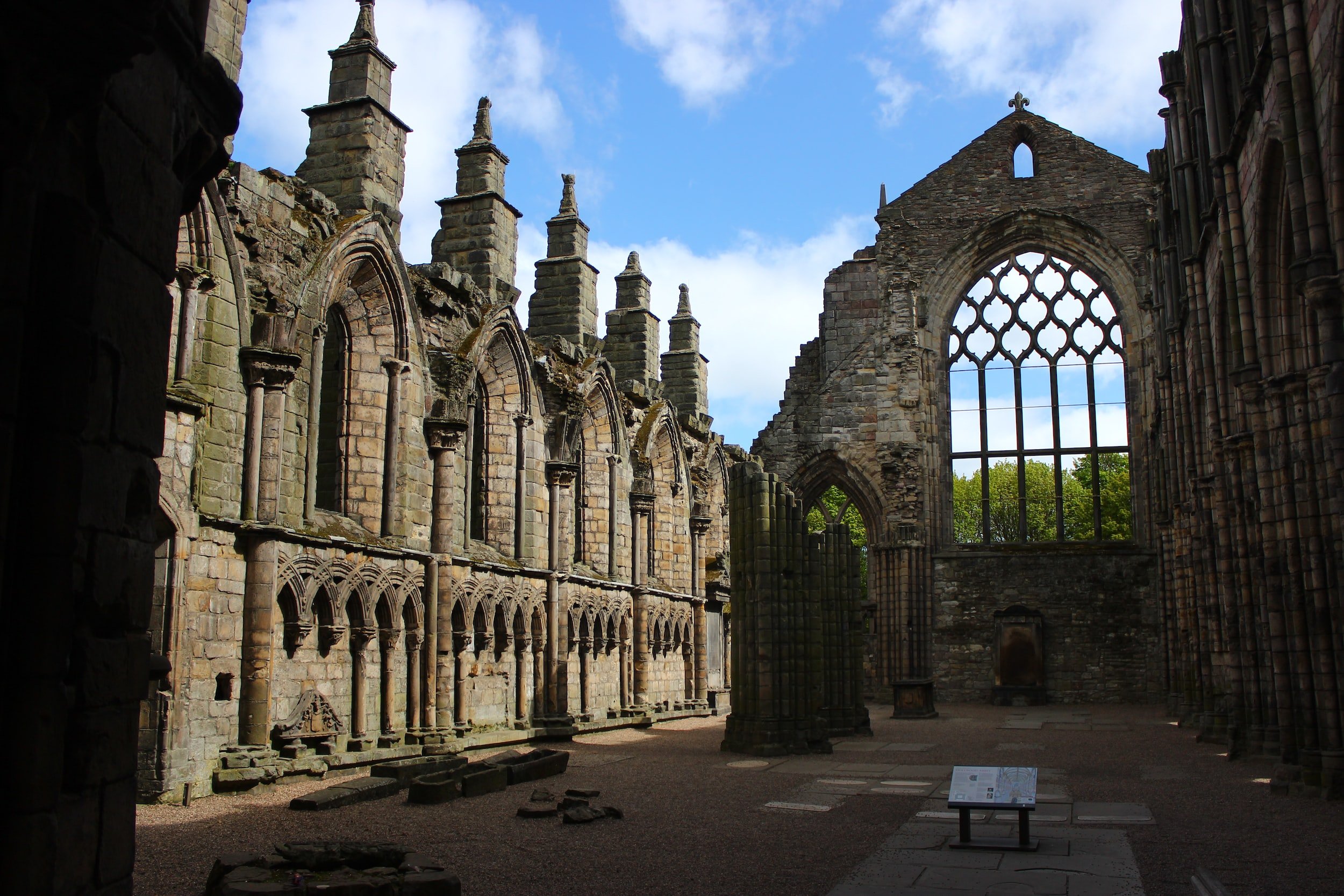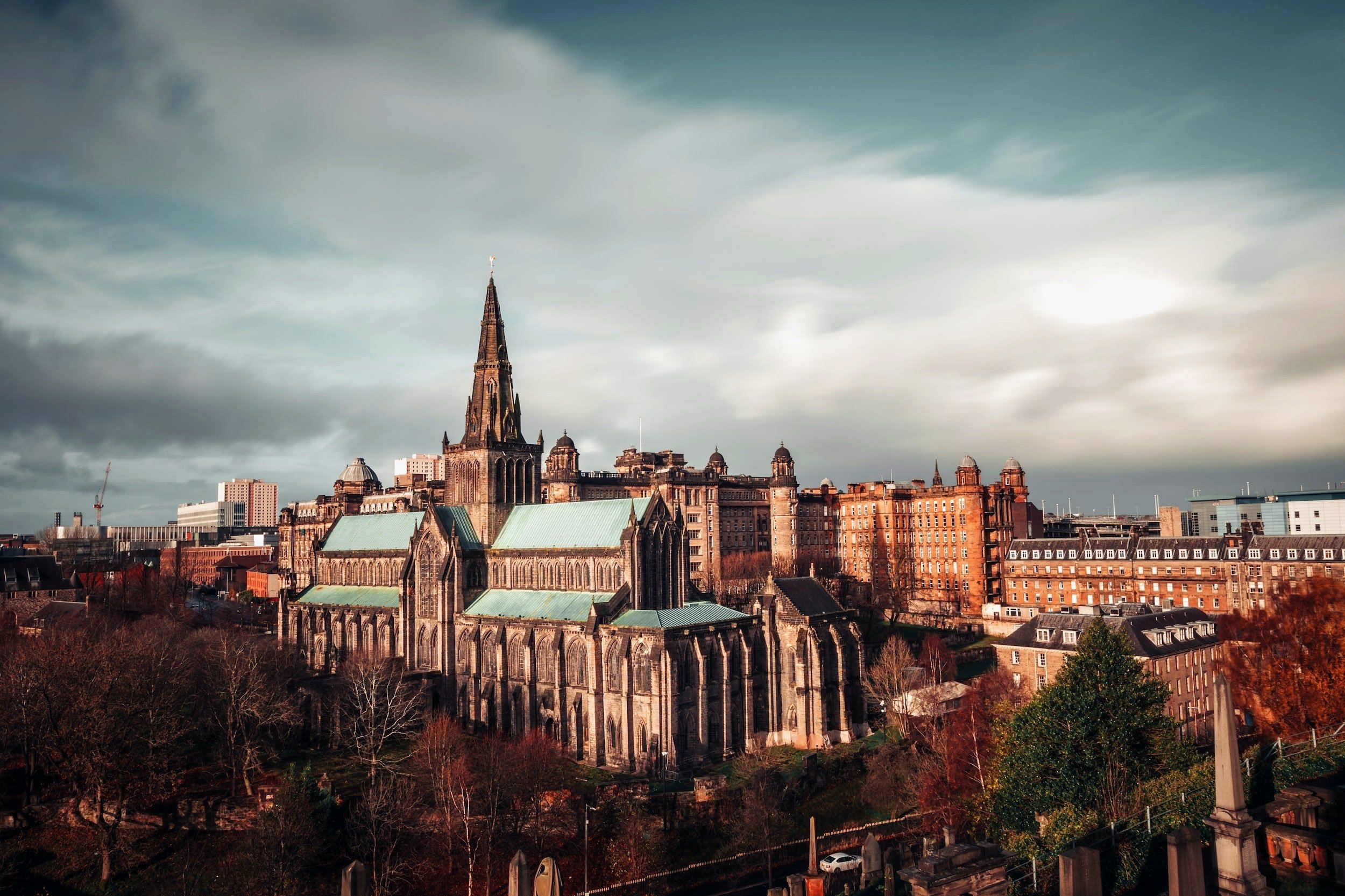
Braveheart
9 DAYS
Edinburgh 2 • Pitlochry 1 • Fort William 2 • Glasgow 2
Basic Inclusions
Accommodations
Accommodations in centrally-located three-star or four-star hotels. Rooming on a triple basis. Double rooms: $50 per night, per person.
Meals
All breakfasts. All dinners. Traditional Scottish Dinner and Show on Day 3.
Transportation
Round-trip transportation on scheduled airline. Deluxe touring motorcoach. All public transportation tickets included where applicable.
Guide
Services of a specially-trained passports Tour Director throughout.
Travel Protection
Passports provides and pays for a Post Departure Travel Protection Plan that includes coverage for Trip Interruption, Trip Delay, Medical Expense and Evacuation and more.
Tour Summary
Days 1-2: Home - Edinburgh
Arrival transfer
Ghost Walking Tour
Day 3: Edinburgh
Half-day city sightseeing: Local Guide, Visit to Edinburgh Castle
Visit to the Palace of Holyroodhouse
Optional Excursion to Roslin: Visit to Rosslyn Chapel
Traditional Scottish Dinner and Show
Day 4: Edinburgh - Inverness
Sightseeing stop in St. Andrews, Visit to the V&A Dundee (design museum)
Day 5: Inverness
Excursion to Dunrobin Castle: Visit to Dunrobin Castle, View Dunrobin's Falconry Display
Inverness Castle Grounds with ascent to Castle Tower Viewpoint (94 steep steps up, and down)
Day 6: Inverness - Fort William
Cruise on Loch Ness, Ride to the Isle of Skye, Eilean Donan Castle photo stop
Day 7: Fort William - Glasgow
The Highland pass of Glencoe, Scenic ride through Loch Lomond and The Trossachs National Park, Visit to Stirling Castle
Day 8: Glasgow
Half-day city sightseeing: Local Guide, Visit to the Glasgow Cathedral of St. Mungo, Visit to the St. Mungo Museum of Religious Life and Art
Day 9: Departure
Departure transfer
UNPARALLELED STANDARD OF EXCELLENCE
Detailed Itinerary
Days 1-2: Arrival, Ghost Walking Tour
When the night sky around you begins to lighten, peer down through the clouds from the windows of your transatlantic jet. Soon you'll see the silhouette of the mighty castle which stands guard over Edinburgh. Then the city itself comes into view, and your plane comes in to land.
Welcome to Scotland. There'll be time to start exploring Edinburgh, birthplace of Sir Walter Scott, Alexander Graham Bell, David Hume, James Boswell, Robert Louis Stevenson, and Scottish national poet Robert Burns, who called it home for several years.
Tonight, a guided ghost tour through Auld Reekie's atmospheric streets and wynds will send shivers down your spine.
Overnight: Edinburgh
Day 3: Edinburgh City Sightseeing, Palace of Holyroodhouse, Edinburgh, Optional Excursion to Roslin, Traditional Scottish Dinner and Show
Enjoy a coach tour along the ancient Royal Mile, through the narrow alleys of the city's medieval Old Town and into the 18th-century New Town. See the extinct volcano, Arthur's Seat, which looms over the city.
A half-day local guide, well-educated and specially-trained on the history and culture of Edinburgh, will accompany your group.
Visit the fortress which defines Edinburgh's skyline from its high-perched location on the granite core of an extinct volcano. This castle shelters the Scottish Crown and Regalia, and the Stone of Destiny, returned to Scotland in 1996 after a 700-year stay at Westminster Abbey. Within its walls stand several buildings, including the Palace where Mary, Queen of Scots, gave birth to King James I of England in 1566 and St. Margaret's Chapel, built in 1130 to honor the pious wife of King Malcolm III.
You will visit the Palace of Holyroodhouse, the monarch's official residence in Scotland.
As you tour the Royal Apartments, rebuilt in the 17th century, you will hear about Mary Queen of Scots, who resided in the palace in the 16th century, as did Bonnie Prince Charlie in 1745.
If visiting the Palace between April and October, you may join a free guided tour of Holyrood Abbey, an Augustinian Abbey now in ruins which was founded in 1128 and named after a relic of the True Cross (Holy Cross) also called Holy Rood, or Black Rood.
Holyrood Palace and Abbey are located near Holyrood Park, the largest park in Edinburgh, which includes meadows, a lake and rocky crags, notably the ancient volcano known as Arthur's Seat.
The remainder of the day is free to plan as you wish.
Do you like brain challenges? Check out the Camera Obscura and World of Illusions, a major attraction housed in the Outlook Tower, with five floors of exhibits and illusions.
Museums include the Royal Museum of Scotland and the National Gallery of Scotland.
Check out The Elephant House, a gourmet tea and coffee shop near Edinburgh Castle that gained fame when it became known that J.K. Rowling had written her first Harry Potter novel there.
Set out for the small town of Roslin, on the outskirts of Edinburgh, which has two claims to fame: its unique Chapel and the National Institute of Bioscience where the first cloned mammal, Dolly the sheep, was born in 1996.
Enter the enigmatic sanctuary that figures prominently in Dan Brown's 2003 best-seller, The Da Vinci Code, and the 2006 blockbuster film inspired by the novel. Officially called the Collegiate Church of St. Matthew, the chapel dates back to 1446 and is regarded as an outstanding example of stone carving. Mysteries and legends represented in its stones attract a large number of visitors since the site has been linked to the Holy Grail, the Holyrood relic, buried treasures, ley lines, earth energy, medieval Knights Templar, Freemasonry, and more!
Don your kilt and head out for a Scottish evening of haggis, 'neeps and tatties, with singing and dancing to the sound of the bagpipes.
Overnight: Edinburgh
Day 4: St. Andrews, Dundee, Inverness
Welcome to the ancient capital of the Kingdom of Fife and the birthplace of golf, Scotland's beloved gift to the world of sport. The Royal & Ancient Golf Club, the mecca of golf enthusiasts, was founded here in 1754. Thought to be one of the most beautiful locations in all of Britain, St. Andrews is filled with numerous monastic ruins, ancient houses, delightful shops, and pubs. (Shop for a classic putter at one of the many custom club makers' shops.)
University of St. Andrews
A prominent landmark is the University of St. Andrews, which is the third-oldest in the United Kingdom after Oxford and Cambridge (founded in 1413) and also one of the best, as it is ranked fifth in the country. The most famous alumni in recent years are Prince William, enrolled as William Wales, and his wife, Kate Middleton, now the Duchess of Cambridge.
Have a look at the grounds of St. Andrews Cathedral. Consecrated in 1318, it has been in ruins since the 15th century, a victim of faulty design and of the harsh North Sea winds. The Cathedral grounds, which also include a cemetery and the free standing St. Rule's Tower, form a spell-binding site. Nearby lie the grounds of St. Andrews Castle, ruined by centuries of political and religious warfare.
Continue to Scotland's fourth-largest city, a medieval trading port that grew into an important whaling harbor and shipbuilding center.
Dundee's seafaring tradition is beautifully shown at Discovery Point, a museum complex that includes Captain Scott's ship RRS Discovery, and exhibits on Scott's ill-fated expeditions to the South Pole between 1901 and 1912.
Discover a striking contemporary Dundee landmark inaugurated in 2018 on the waterfront. It quickly became a pole of attraction as the first branch of London's prestigious Victoria & Albert museum, a leading institution for art and design since 1852.
Travel to Inverness, a city on the River Ness that is regarded as the capital of the Scottish Highlands.
Overnight: Inverness
Day 5: Excursion to Dunrobin Castle, Inverness Castle Grounds with Ascent to Castle Tower Viewpoint
A ride due north take you to a small town set between the North Sea Coast and a prominent hill known as Ben Bhraggie, which is crowned by a statue visible from afar.
The Dukes of Sutherland and their ancestors have called this property home since the early 1300s. Nowadays, set amid splendid grounds, it stands out as the largest and most northerly castle in the Northern Highlands.
Get an introduction to birds of prey as you meet Dunrobin's trained falcons. See how they respond to commands. Hear how they have been used for hunting for centuries, and how important they are for the ecosystems in which they live. And watch them fly!
Head up the hill that overlooks Inverness, where a sandstone castle built in 1836 now houses administrative services such as the Sheriff's Court.
A stroll through the castle grounds will take you back to the 10th century, when Macbeth of Cawdor murdered Duncan, King of the Scots, in the medieval fortress that once stood on this site. Beware, as it has been said that the ghost of King Duncan in full regalia can be seen walking along the banks of the River Ness.
Then, climb up the castle tower (spiral staircase with 94 steep steps up, and down). Enjoy the 360-degree panoramic view of the Scottish Highlands, which is as spellbinding as the automated narration that explains the sights as well as some myths and legends from the region.
Overnight: Inverness
Day 6: Loch Ness, Isle of Skye, Fort William
Near Inverness, the Great Glen is filled by a lake twenty-four miles long, one mile wide, and in places 900 feet deep. Underwater caves offer plausible hiding places for the legendary Loch Ness Monster, whose first sighting was recorded in the 7th century. Even the most skeptical observers can't resist scanning the loch's enigmatic surface in search of Nessie!
Board a boat for a cruise on the loch. Underwater caves offer plausible hiding places for Nessie, whose first sighting was recorded in the 7th century! Even the most skeptical observers can't resist scanning the loch's enigmatic surface.
Along the shore, battlefields and castle ruins remain silent witnesses to the region's troubled past, when, to quote Dr. Johnson, "savage clans and raving barbarians" kept getting at each other's throats.
Enjoy a drive through wild and glorious countryside along the Great Glen and across one of Scotland's most scenic regions. Your destination is the town of Kyle of Lochalsh and the Skye Bridge which connects the mainland to the Isle of Skye.
Skye's Cuillin Mountains, topping off at 3,000 feet, are Britain's most precipitous, while the coast, constantly broken by sea lochs, presents striking cliff scenery. You'll hear about the bravery of the locals, who struggled to preserve their culture and assisted the runaway prince Charles Edward Stuart, also called the Young Pretender or Bonnie Prince Charlie, who wandered through the Highlands for five months after his defeat at Culloden and before his lifelong exile.
Arrive at the colorful harbor town of Portree.
Proceed to Dornie, a small mainland town on the road to Skye, for a photo stop at Eilean Donan Castle, which has become a symbol of Scotland. Set in an idyllic site, it has been restored to look as it did in the 13th-century.
Continue to An Gearasdan (The Garrison), which is the Highlands' second largest settlement. Located amid splendid mountain and water scenery, Fort William grew at the foot of the snow-capped granite mass of the 4,006-foot-high Ben Nevis, Britain's highest summit.
Overnight: Fort William
Day 7: Glencoe, Stirling, Glasgow
The drama continues today as you cross Glencoe, the best-known of the Highland passes, also known as the "Vale of Tears" due to the treacherous massacre of 1692 in which 38 members of the Clan MacDonald perished.
Continue into a national park known for the spectacular lochs (fjords) and heather-clad mountains that inspired Sir Walter Scott. This is the region where the Highlands and Lowlands meet in scenic splendor, the land of the 18th-century outlaw Rob Roy, and the turf of clans named Macfarlane, MacGregor, and Colquhoun.
Head northwest to Stirling, whose castle commanded the only land route across the Forth River. As a result, it overlooks seven battlefields! South of Stirling is Bannockburn, the site of the decisive battle of 1314, when Robert the Bruce engaged Edward II of England, and to the north stands the Wallace Monument, a Victorian tower, 220-foot-high, which was built where the Scottish patriot stood observing the English army before the 1297 Battle of Stirling Brig. Another victory for Scotland!
Visit the interior of one of Scotland's most important royal residences, an imposing fortress adorned with crow-stepped gables which overlooks Stirling. On a clear day, one can see thirty miles from its ramparts. Mary, Queen of Scots, spent her childhood in this castle before being sent to France.
Enjoy the journey to Glasgow, the biggest city in Scotland and rivaling Edinburgh for the title of its finest.
Overnight: Glasgow
Day 8: Glasgow City Sightseeing
See the Old town, the Victorian streets and squares of the New Town and the banks of the River Clyde in the heart of the city once dubbed "Shipbuilding capital of the world."
A local guide, well-educated and specially-trained on the history and culture of Glasgow, will accompany you today.
Visit the sanctuary of the Church of Scotland whose long history is reflected in its multiple names: High Kirk, Cathedral Church of St. Mungo, and Cathedral Church of St. Kentigern. Its architecture reflects a high point of Gothic cathedral building in Europe, although it was cleared of Catholic ornamentation during the Reformation.
On a visit to the museum on Cathedral Square. view exhibits devoted to all of the world's major faiths, including a Zen garden and sacred Islamic calligraphy. This makes the St. Mungo Museum of Religious Life and Art exceptional since it's one of a handful of museums around the world that are focused on world religions.
Overnight: Glasgow
Day 9: Departure
With the haunting melody of the bagpipes still ringing in your ears and wearing your new-found tartan with pride, you head to Glasgow or Edinburgh Airport to board your plane. It's time to rejoin the clan back home.
But you know you'll be back. For Auld Lang Syne.
CUSTOM TOURS
All tours can be customized to your particular needs.
Or start from scratch - we will build your dream tour!
Edinburgh City Sightseeing
Palace of Holyroodhouse
Dunrobin Castle
Inverness Castle Grounds
Loch Ness Cruise
Portree, Scotland
Stirling Castle
Glasgow, Scotland











Discover practical tips for teachers to organize affordable, enriching educational travel experiences—without sacrificing impact.